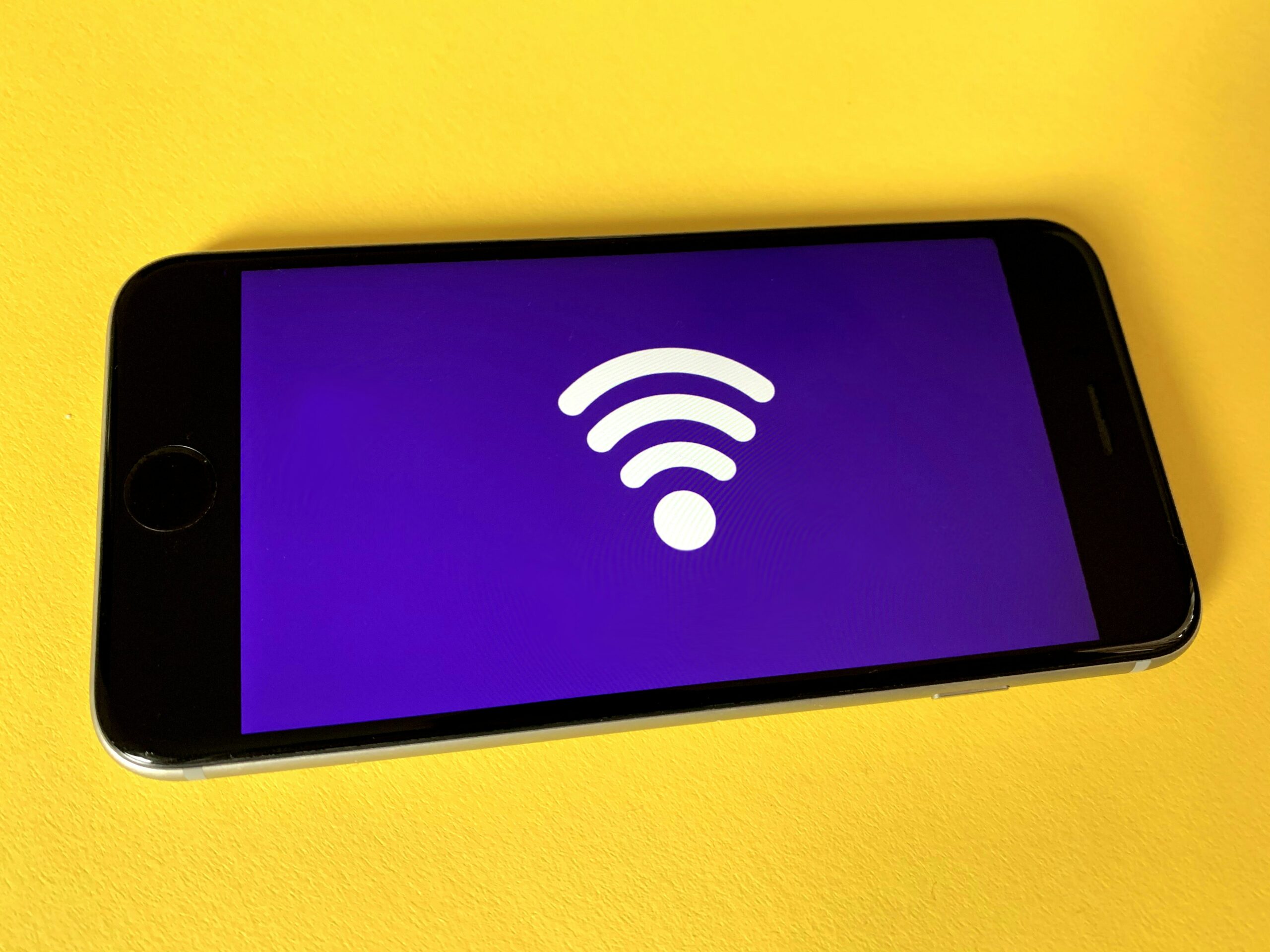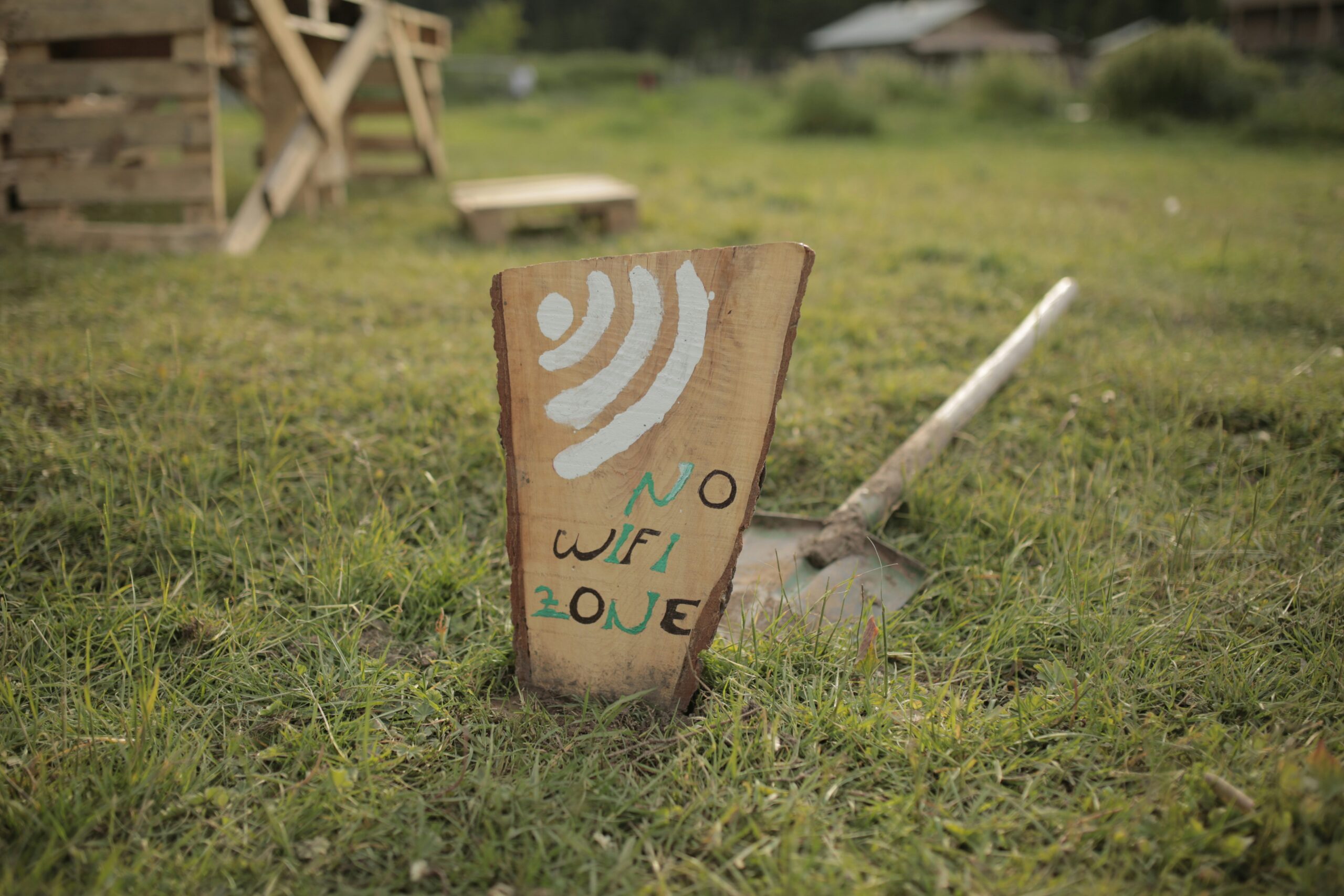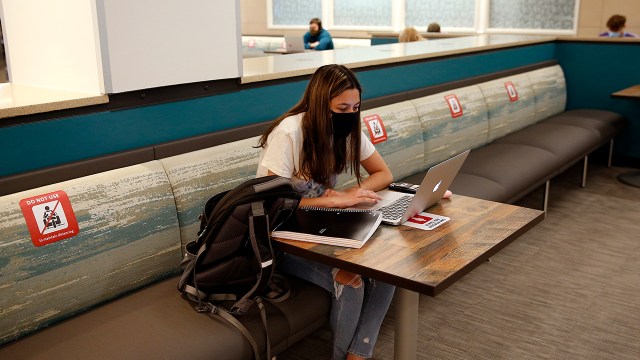
Faculties and universities throughout the US scrambled q4 to get a hold of a protected and sensible technique to studying because the coronavirus outbreak confirmed no indicators of easing up, with some faculties opting to renew campus lifestyles and others going totally digital.
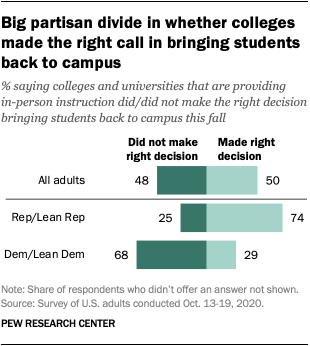
Faculties are proceeding to conform amid new outbreaks in positive COVID-19 hotspots. In contrast backdrop, the general public has combined perspectives on whether or not offering in-person instruction q4 was once a good suggestion. Part of all U.S. adults say faculties and universities that introduced college students again to campus made the correct resolution, whilst 48% say they didn’t, consistent with a brand new Pew Analysis Middle survey. A separate research of Census Bureau information displays that school enrollment amongst 18- to 24-year-olds dipped best fairly from remaining 12 months.
Perspectives on whether or not faculties and universities made the correct resolution in bringing college students again to campus are deeply divided alongside birthday party traces, with Republicans and people who lean to the Republican Celebration greater than two times as most likely as Democrats and Democratic leaners to mention bringing college students again was once the correct resolution.
This submit explores the demanding situations confronted via faculties and universities within the time of COVID-19, together with perspectives on whether or not those establishments will have to have reopened or no longer, perspectives at the effectiveness of on-line studying and traits in scholar enrollment. The general public opinion findings on this file come from a survey fielded Oct. 13-19, 2020, amongst 10,332 U.S. adults.
Everybody who took section is a member of Pew Analysis Middle’s American Tendencies Panel (ATP), a web based survey panel this is recruited thru nationwide, random sampling of residential addresses. This fashion just about all U.S. adults have a possibility of variety. The survey is weighted to be consultant of the U.S. grownup inhabitants via gender, race, ethnicity, partisan association, training and different classes. Learn extra in regards to the ATP’s method.
Listed here are the questions used for this file, at the side of responses, and its method.
The research of new school enrollment ranges and charges is in accordance with the per 30 days Present Inhabitants Survey (CPS), performed via the U.S. Census Bureau for the Bureau of Hard work Statistics. The CPS is the country’s premier exertions power survey and is the foundation for the per 30 days nationwide unemployment price launched at the first Friday of every month. The CPS is in accordance with a pattern survey of about 60,000 families. The estimates don’t seem to be seasonally adjusted.
Every month the elemental CPS questionnaire features a restricted selection of questions about college and faculty enrollment. Faculty enrollment charges have a tendency to showcase vital seasonal fluctuations. For instance, enrollment in the summertime months is under the wintry weather and fall months. September 2020 is the latest information to be had. To attenuate the have an effect on of per 30 days fluctuations all of the research makes use of September CPS information.
The CPS microdata information equipped via the IPUMS on the College of Minnesota had been analyzed. In IPUMS the elemental college enrollment questions are consolidated into the variable categorized SCHLCOLL.
The COVID-19 outbreak has affected information assortment efforts via the U.S. govt in its surveys, particularly restricting in-person information assortment. This led to a 4 share level lower within the reaction price for the CPS in September 2020. It’s imaginable that some measures of employment and enrollment and its demographic composition are suffering from those adjustments in information assortment.
This partisan hole displays a divide at the reaction to the coronavirus extra widely. Earlier Pew Analysis Middle surveys discovered that Republicans and Democrats have differed of their perspectives in regards to the severity of the general public well being disaster, restrictions on companies and different public actions and masks dressed in. Within the present ballot, 74% of Republicans say faculties which can be these days offering in-person instruction made the correct resolution in bringing college students again to campus q4; best 29% of Democrats say the similar.
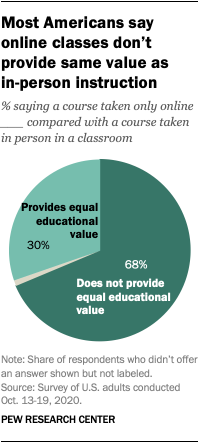
Even at some faculties the place college students are again on campus, on-line studying is a lot more prevalent this 12 months than in earlier years. And for lots of faculties, virtually all categories are being held just about. American citizens are skeptical that this sort of studying supplies the similar worth as in-person instruction. Total, 30% of adults say a path taken best on-line supplies an equivalent instructional worth when compared with a path taken in consumer in a study room; 68% say it does no longer. Majorities of Republicans and Democrats specific this view, even though Democrats are quite much more likely than Republicans to mention on-line categories supply an equivalent worth (33% vs. 26%).
Faculty graduates are a number of the in all probability to mention that on-line categories do no longer measure as much as in-person ones. Amongst the ones with a bachelor’s level or upper, 75% say on-line categories don’t supply an equivalent instructional worth. This compares with 67% amongst the ones with some school training and 64% for the ones with a highschool degree or much less.
When requested extra widely about how faculties and universities are doing this present day, the general public continues to specific unfavorable perspectives. About four-in-ten American citizens (41%) say the upper training gadget within the U.S. is normally getting in the correct route, whilst a majority (56%) say it’s going within the flawed route. That is very similar to 2018, when 38% of American citizens mentioned upper training was once getting in the correct route and 61% mentioned it was once going within the flawed route.
The partisan hole in this query stays huge. About part of Democrats (49%) say upper training goes in the correct route, whilst the similar proportion say it’s going within the flawed route. By contrast, 66% of Republicans say it’s going within the flawed route, and best 32% say it’s getting in the correct route.
Decline in school enrollment extra pronounced amongst Black and Asian younger adults, the overseas born and the ones dwelling within the Northeast
Faculty college students themselves have needed to make tricky selections about whether or not to go back to campus – in consumer or just about – q4. A brand new Pew Analysis Middle research of Census Bureau information displays there was a slight decline in enrollment when compared with fall 2019. This September, 11.2 million 18- to 24-year-olds had been enrolled in school, down from 11.5 million the similar time remaining 12 months.
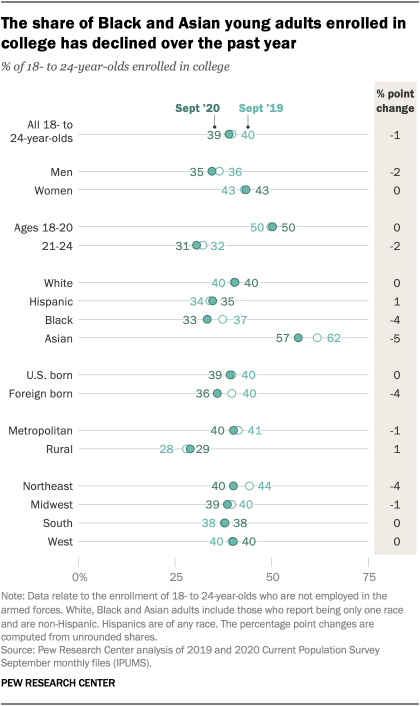
Evaluating September’s school enrollment charges from 2019 and 2020 displays that some teams of younger adults have skilled larger declines than others. For instance, fewer males ages 18 to 24 are enrolled in school this 12 months than remaining (36% in 2019 vs. 35% in 2020), whilst ladies’s school enrollment price has remained the similar (43%).
The stocks of Black and Asian American college students enrolled in school have dropped noticeably. In 2019, 62% of Asian adults ages 18 to 24 had been enrolled in school; that proportion stands at 57% now. Enrollment amongst Black adults on this age team declined in a similar way, shedding from 37% in 2019 to 33% in 2020. Enrollment for White college students stayed the similar (40%), whilst enrollment amongst Hispanics higher from 34% to 35% in 2020.
The proportion of foreign-born 18- to 24-year-olds enrolled in school dipped 4 share issues from 2019 to 2020, whilst the varsity enrollment of U.S.-born younger adults remained unchanged.
The school enrollment price for 18- to 24-year-olds dwelling in metropolitan spaces slipped from 41% in 2019 to 40% in 2020, whilst the enrollment price for rural younger adults higher 1 share level. Domestically, the Northeast (-4 issues) and Midwest (-1 level) each noticed enrollment price declines from 2019 to 2020, whilst the South and West held secure.
Previous to this 12 months, school enrollment had climbed incessantly from 1989 thru 2012 and has fluctuated since then. The enrollment decline is pushed via a downward pattern within the proportion amongst 21- to 24-year-olds (down 2 issues). The proportion of 18- to 20-year-olds who’re enrolled is unchanged from 2019.
Be aware: Listed here are the questions used for this file, at the side of responses, and its method.



Supply Through https://www.pewresearch.org/fact-tank/2020/10/26/americans-are-divided-on-whether-colleges-that-brought-students-back-to-campus-made-the-right-decision/
